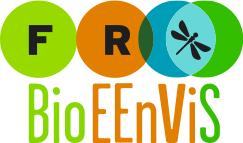Evolution towards a two-way cooperation in a single symbiotic organ: the developmental chronicle of a multi-partner insect endosymbiosis
Résumé
Dependence on multiple nutritional endosymbionts forming a metabolic unit has evolved many times in insect taxa that feed on nutritionally unbalanced diets. It has been shown that the distribution of nutrient biosynthesis between nutritional symbionts coexisting within the same host goes hand in hand with their assignment to distinct specialized host cells (bacteriocytes) within the same symbiotic organ (bacteriome), according to an architectural layout that prevails in many insect species. This compartmentalization enables symbiont populations to be finely tuned to the host's nutritional needs during development. However, the mechanisms underlying the coordination of partners in these multi-symbiotic systems are unknown. To unveil these mechanisms, we used a combination of cell imaging, qPCR and dual-RNA seq approaches on the cereal aphid Sipha maydis, which has evolved a nutritional dependence on the symbiotic unit Buchnera aphidicola-Serratia symbiotica. The two symbionts are rapidly internalized in distinct types of bacteriocytes during embryogenesis, forming a horseshoe-shaped bacteriome. This consists of an assembly of syncytial bacteriocytes containing Serratia, embedded between uninucleate bacteriocytes containing Buchnera, which tend to dissociate from each other as the aphid ages. Surprisingly, while the infection dynamics of the two nutritional symbionts are strictly parallel during the nymphal stages, they tend to diverge during the reproductive phase, with a decrease in Buchnera populations and an increase in Serratia populations until the death of the host. This suggests that the metabolic complementation of the two symbionts tends to slacken with host development, and that their populations are not controlled in the same way. Our observations also show that the nutritional symbionts are not regulated in the same way as in the model aphid Acyrthosiphon pisum. They also highlight the existence of a new cell type systematically associated with bacteriocyte clusters, whose function is unknown. Dual RNA-seq analyses of bacteriocyte clusters collected at different developmental stages show that control of both symbionts involves the regulation of a set of genes related to metabolism, development and virulence. In conclusion, our study provides in-depth insight into the developmental mechanisms that govern cooperative intracellular life between anatomically integrated nutritional symbionts, and provides a comprehensive base map for examining the evolutionary developmental biology of insect multi-symbiotic systems.
Domaines
Sciences du Vivant [q-bio]| Origine | Fichiers produits par l'(les) auteur(s) |
|---|
